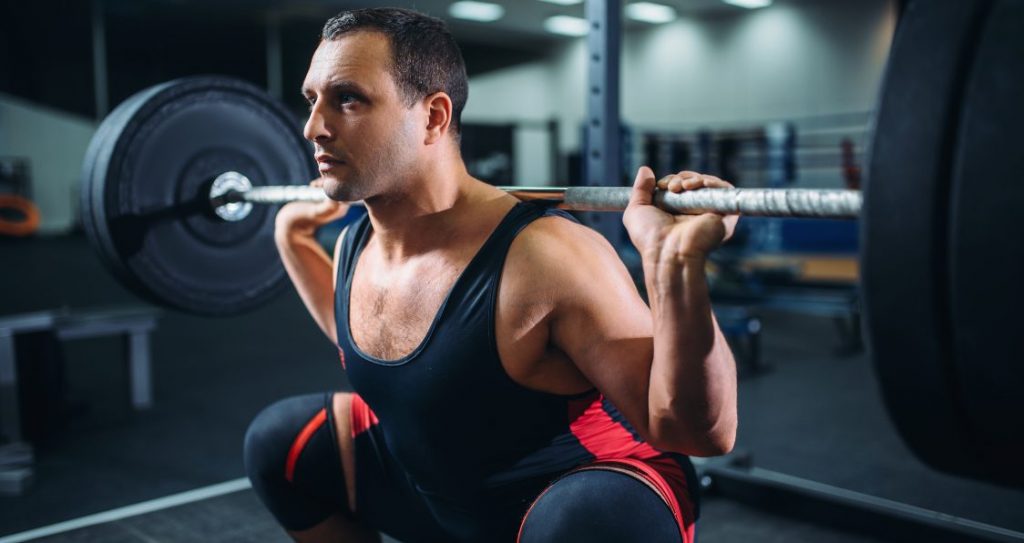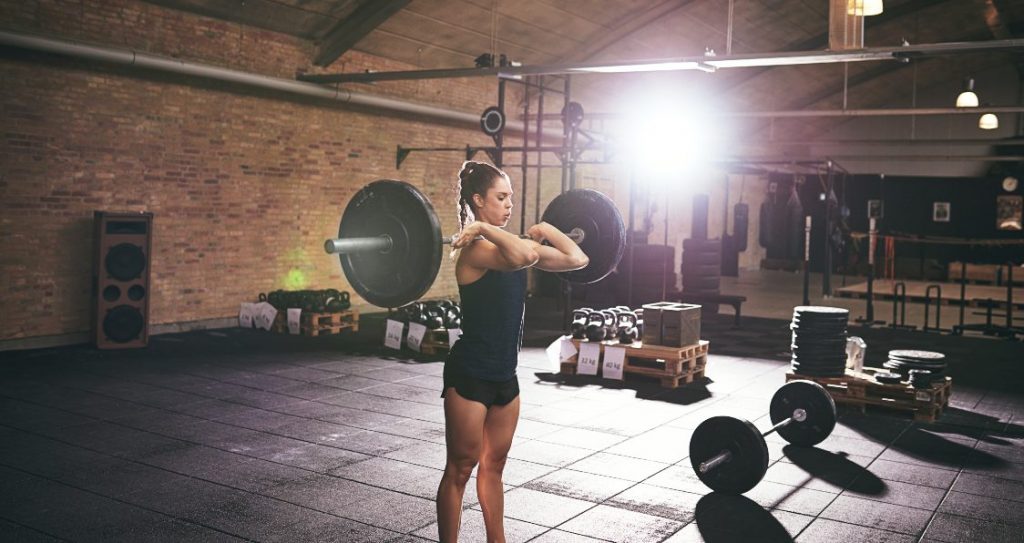Which One Should You Do?
Many tout the barbell back squat to be the king of all exercises and while the back squat does have a lot of benefits, so does its squat-brother, the barbell front squat. Both movements build strength and hypertrophy in your lower body — glutes, quads, and hamstrings —, although each one emphasizes more of your anterior (front) or posterior (back) muscles.
Depending on if you have lower back pain, are an athlete, new to the gym, or what your goal is will determine what movement you should focus on. This article will cover the form differences of each, what muscle they work, and which one to do.
What Muscles Do They Work?
The back squat and front squat both work your lower body muscles — glutes, hamstrings, and quads —; however, each one activates one more than the other.
Posterior Chain Vs. Anterior Chain
The back squat will work more of your posterior chain — glutes and hamstrings — while the front squat will engage more of your anterior chain — quadriceps. That’s because when you do a back squat you load the barbell behind your midline, and when you do a front squat, the load is placed in the front — where your quads sit.
How to Do the Back Squat

Place the height of the squat rack clips to a height that allows you to comfortably rest the barbell on your back and unrack the weight without having to squat down too low or get on your tippy-toes to lift the weight up — you should be in a quarter squat position. Grab the barbell with your hands, lift the weight, then slowly take a few steps back — this is your starting position. Now, squat down to make your legs form a 90-degree angle or slightly past that while keeping your torso upright, then extend up. Make sure that you stay back on your heels and keep your knees as stable as possible through the full range of motion.
Benefits
- You can use more weight than most movements.
- It works your posterior chain.
- Easier to do for beginners than front squats.
How to Do the Front Squat

Place the height of the squat rack clips to a height that allows you to comfortably rest the barbell on your upper chest and unrack the weight without having to squat down too low or get on your tippy-toes to lift the weight up — you should be in a quarter squat position. Grab the barbell with your hands with a close grip and lift the weight up and take a couple of steps back to get into the starting position. Squat down to make your legs parallel with the ground — where your knees meet your thighs — or slightly past that, then lift the weight up. It’s important you keep your torso straight and don’t allow your knees to go over your toes during the eccentric (lengthening) and concentric (contraction) portions of the lift.
Benefits
- Targets your anterior chain with a heavy load.
- Healthier for your back than the back squat.
Differences Between the Back Squat and Front Squat
Each brother-squat has their distinct technique difference, as well as different benefits. Below, we’ll be covering those, so you get a better idea of which one would benefit you the most.
Barbell Positioning
The major difference between the front squat and back squat is where the barbell sits, of course. The barbell rests on the top of your back on the barbell squat while it rests on your upper chest for the front squat.
Wrist Mobility
With the front squat, you’ll need good wrist mobility to rest the barbell onto your upper chest. However, if the movement feels a bit uncomfortable, you can opt to cross your arms and grasp the barbell on each side while the barbell rests on your collar bone.
Total Strength
Overall, you’ll be able to use more weight with barbell squats than you will with front squats. That’s because it’s easier to lift a load on your back than it is on your chest since you’ll be activating your glutes and hamstrings more, which are stronger than your quads alone.
Knee and Back Health
The front squat places less stress on your spine and knees than the barbell squat does, so it’s healthier for your back. (1)
Similarities Between the Back Squat and Front Squat
Although the back squat and front squat are different, many parts of their movement and benefits are the same. Read on to learn their similarities.
Squat Form
Though both squat variations have their differences, the correct form of a standard squat applies to both. You’ll be in a shoulder-width stance and squat down to parallel or slightly past that. You’ll also keep your back straight and your torso upright while keeping your front knees behind your toes when you squat down. Also, both require you to keep your knees stable without valgus (knees caving in) or varus (knees pointing out).
Muscles Worked
Although the back squat and front squat split the emphasis each will place on your different lower body musculature, both barbell movements will engage all the muscles in your lower body.
When to Use Each
After learning the similarities and differences between both squats, deciding which one is right for you can still be confusing. Below, we’ve garnered a list to help make that choice a breeze.
Back Issues
If you have any back issues, it’s best to stick with front squats since you won’t be placing as much load on your spine.
Athletes
Athletes that require sprinting and jumping should focus more on back squats since your glutes and hamstrings are used more than your quadriceps during those movements. (2)
Beginners
Beginners should focus on back squats and get that form down before transitioning to front squats since it doesn’t require as much mobility.
Occupation
If you have a desk job, you’ll likely be quad dominant and be at an increased risk for tight glutes, which can lead to lower back pain; therefore, it’s recommended that you stick with back squats since it activates more of your glutes.
Strength and Power
For overall lower body strength and power, you’ll want to do back squats since you’ll be able to load the barbell with more weight.
Final Word
The barbell squat and front squat are both exceptional movements for building strength and hypertrophy in your lower body. The back squat will allow you to use more weight and focus more on your posterior chain, but the front squat is healthier for your back and will strengthen your quads more.
Follow us on Facebook, Instagram, and Twitter for more lifting tips!
References
- Yavuz, H. U., Erdağ, D., Amca, A. M., & Aritan, S. (2015). Kinematic and EMG activities during front and back squat variations in maximum loads. Journal of sports sciences, 33(10), 1058–1066. https://doi.org/10.1080/02640414.2014.984240
2. Myer, G. D., Kushner, A. M., Brent, J. L., Schoenfeld, B. J., Hugentobler, J., Lloyd, R. S., Vermeil, A., Chu, D. A., Harbin, J., & McGill, S. M. (2014). The back squat: A proposed assessment of functional deficits and technical factors that limit performance. Strength and conditioning journal, 36(6), 4–27. https://doi.org/10.1519/SSC.0000000000000103








